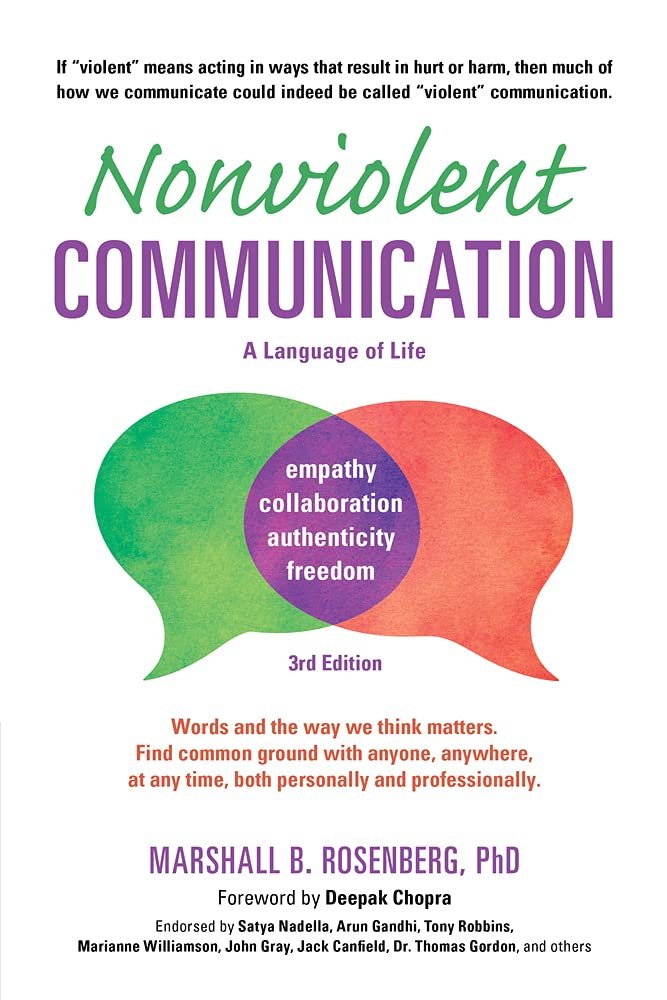Have you ever felt misunderstood in your conversations or found it challenging to communicate your needs effectively? If you’re nodding your head, then you might find “Nonviolent Communication: A Language of Life: Life-Changing Tools for Healthy Relationships (Nonviolent Communication Guides) Paperback – September 1, 2015” to be an insightful read. This book provides practical tools and guidance for fostering healthier, more empathetic relationships through improved communication techniques.

Overview of Nonviolent Communication (NVC)
Nonviolent Communication (NVC), put forth by Marshall Rosenberg, is a communication framework aimed at fostering compassionate and empathetic interactions. Its principle revolves around understanding one’s own needs and the needs of others to enrich connection rather than conflict.
Core Principles
The book introduces four essential components that serve as the backbone of NVC:
| Principle | Description |
|---|---|
| Observation | Describing what is actually happening objectively |
| Feelings | Expressing how you feel about what you observed |
| Needs | Identifying the needs or values that create feelings |
| Requests | Making clear requests that address those needs |
Importance and Benefits
NVC emphasizes the importance of empathetic listening and the acknowledgment of both personal and others’ needs. It helps in reducing misunderstanding, fostering compassionate connections, and resolving conflicts peacefully. By focusing on these principles, you can transform your interactions positively in both personal and professional settings.
Detailed Breakdown
Observation Without Evaluation
Rosenberg stresses the importance of observing situations without attaching judgments or evaluations to them. This step is crucial to maintain objectivity and avoid misunderstandings.
Expressing Feelings
Articulating emotions clearly without blame or judgment is the next step. This explicit expression allows others to understand your emotional state without defensiveness.
Identifying Needs
Feelings act as signals pointing to whether needs are being met. Recognizing and articulating these needs can guide your communication, ensuring others understand the underlying motivations.
Making Requests
Converting needs into actionable requests is the final step. It’s essential that requests are clear, specific, and made in a way that doesn’t demand but invites cooperation.
Application in Daily Life
The book not only expounds the theory but also provides practical exercises and examples that illustrate how these principles can be put into practice in everyday interactions. From family disputes to workplace disagreements, the tools given can be universally applied.

Real-Life Impact
Personal Relationships
One of the standout strengths of this book is its applicability in personal relationships. The principles of NVC can lead to more honest, empathetic, and effective communication with loved ones.
Professional Settings
In the workplace, NVC can improve team collaboration, as it focuses on understanding and meeting each other’s needs, thereby reducing misunderstandings and enhancing cooperation.
Conflict Resolution
NVC offers a pathway to resolve conflicts without escalating tensions. By focusing on underlying needs rather than positions, it becomes easier to find common ground and mutually satisfactory solutions.
Pros and Cons
Pros
| Pros | Details |
|---|---|
| Empathy-centric approach | Focuses on understanding and addressing needs |
| Practical tools | Offers actionable advice and exercises |
| Universal application | Applicable in personal, professional, and societal contexts |
| Enhances self-awareness | Encourages clarity of one’s own feelings and needs |
Cons
| Cons | Details |
|---|---|
| Time-consuming to master | Requires consistent practice and effort to internalize |
| Potential for misuse | Can be manipulated by those who don’t genuinely embrace the ethos of empathy |
Balance
While the benefits of adopting NVC are manifold, the transition requires commitment and willingness to change entrenched communication habits. Nonetheless, the potential improvements in relationship dynamics make this effort worthwhile.
Conclusion
“Nonviolent Communication: A Language of Life: Life-Changing Tools for Healthy Relationships” is not just a book; it’s a guide to transforming how you interact with others. Whether in resolving conflicts, enhancing relationships, or simply understanding yourself and others better, this book offers invaluable insights and tools. Learning and applying NVC can be life-changing, paving the way for more compassionate, empathetic, and effective communication.
Disclosure: As an Amazon Associate, I earn from qualifying purchases.



